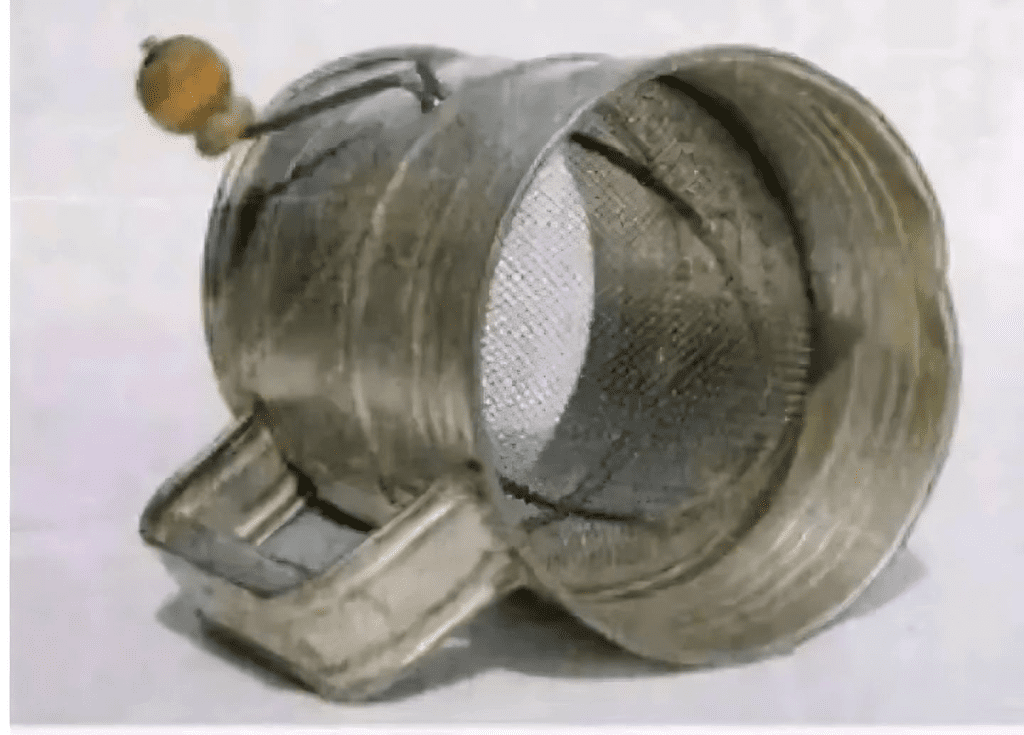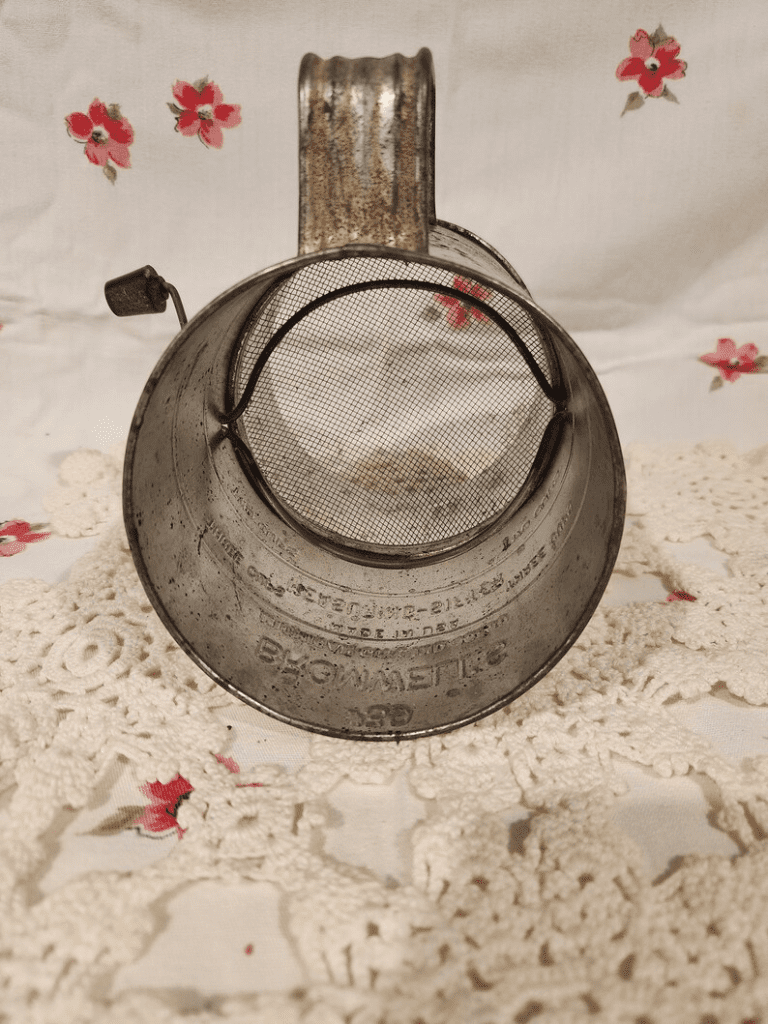Baking is more than just combining ingredients; it’s an art that requires attention to detail, precision, and the right tools. While some baking tools take the spotlight, others quietly do their job behind the scenes, like the flour sifter. This humble, often-overlooked tool can be the key to elevating your baking, helping you achieve that perfect lightness and consistency in your cakes, cookies, and pastries. Curious about what makes the flour sifter so essential? Let’s dive into how this small but mighty tool can make a big impact on your baking results.

What Exactly Does a Flour Sifter Do?
At first glance, a flour sifter might seem unnecessary—an extra step in the process that adds time to your recipe. However, its primary role is much more than just a time-consumer. A flour sifter breaks up clumps, aerates the flour, and evenly distributes it into your batter or dough. By using a flour sifter, you’re ensuring that your baked goods come out smooth, light, and free from unwanted lumps.
Additionally, a flour sifter helps mix other dry ingredients. For example, when you combine flour with cocoa powder, baking soda, or powdered sugar, the sifter evenly distributes these ingredients. This means you avoid unpleasant surprises like pockets of unblended baking powder in your cake—a mistake that can ruin an otherwise delicious treat.
Why Sifting Flour Matters in Baking
You might wonder, “Can’t I just toss everything into the bowl and mix?” Skipping the sifting step can lead to unexpected baking issues, so here’s why it’s worth the few extra minutes.
Creating a Light, Fluffy Texture
Imagine biting into a cake that’s dense or uneven—definitely not the texture you were aiming for! Sifting breaks down flour into finer particles, which helps create a softer, airier texture. This small step can make all the difference between a heavy cake and one that’s light and fluffy.
Accurate Measurements
When flour sits in a bag or container, it tends to compact. By sifting the flour, you achieve a more accurate measurement, as it becomes lighter and less dense. This accuracy is crucial in recipes that require precise amounts, especially delicate pastries or sponge cakes, where even a small difference in flour can affect the outcome.
Removing Impurities and Clumps
Flour can contain small impurities or clumps, which may not dissolve during mixing. Sifting removes these bits, giving you a smooth, clean ingredient that blends perfectly. This is especially important for recipes that rely on a silky texture, like soufflés or chiffon cakes.
Types of Flour Sifters: Choosing the Best One for Your Kitchen
Not all flour sifters are the same, and each type has its own strengths. Here’s a quick overview of the most common types, so you can find the right one for your baking needs.
Crank-Style Flour Sifter
This classic model uses a crank handle to push the flour through a mesh screen. Crank sifters offer precision and are easy to control, making them ideal for bakers who need to sift large quantities. However, they can be a bit tiring if you’re sifting small amounts repeatedly.

Squeeze-Handle Flour Sifter
Squeeze-handle sifters use a spring mechanism to sift the flour. They’re faster than crank models and generally require less effort, though they can be challenging for people with hand pain or arthritis. These are ideal if you’re only sifting a small amount of flour at a time.
Handheld Mesh Strainer
If you don’t have a traditional sifter, a fine-mesh strainer can also work. Add the flour, then gently tap or shake the strainer to achieve a similar effect. Though it might take a bit longer, it’s an easy and versatile alternative that’s simple to clean.
Each type has its advantages, so choose the one that best fits your baking style and physical comfort.
Top Tips for Using Your Flour Sifter Like a Pro
Now that you know what a flour sifter does and how to choose one, let’s get into some helpful tips to make the most of this tool.
Avoid Overfilling the Sifter
When you fill the sifter to the brim, flour can spill out and make a mess. Instead, sift in smaller batches if you need a large amount. This keeps your workstation cleaner and gives you more control over the process.
Tap, Don’t Force
If you encounter clumps that don’t pass through easily, avoid forcing them through. Instead, tap the side of the sifter gently to encourage them to break up. Pushing too hard can damage the mesh or even cause large clumps to fall through, defeating the purpose of sifting.
Sift Just Before Adding to Your Recipe
For the freshest, fluffiest results, sift your flour just before adding it to your other ingredients. Sifting too early can cause the flour to settle, making it compact again and reducing its aeration.

Beyond Flour: Other Uses for Your Flour Sifter
A flour sifter isn’t limited to just flour. It’s actually a versatile tool that can serve a variety of purposes in the kitchen.
Dusting Desserts
For a beautiful finishing touch, use a sifter to dust powdered sugar or cocoa powder over cakes, cookies, or pastries. The sifter provides an even, delicate layer that looks both professional and appetizing.
Mixing Dry Ingredients
If you’re baking something that requires an even blend of flour, baking powder, and cocoa powder, a sifter can help. Simply add the ingredients to the sifter, give it a few shakes, and you’ll have a perfectly mixed base for your batter.
Removing Lumps from Powdered Ingredients
Powdered sugar, cornstarch, and cocoa powder can often have lumps. Running them through a sifter will ensure they are smooth and lump-free, making them easier to work with in any recipe.
The Flour Sifter: A Baker’s Essential Tool
In the world of baking, the flour sifter may not steal the show, but it certainly plays a starring role behind the scenes. Its ability to aerate, refine, and blend ingredients makes it a crucial tool for achieving professional-level results at home. From delicate pastries to hearty breads, the sifter helps ensure every bite of your baked goods is light, tender, and delicious.
Conclusion: Why You Shouldn’t Skip the Sifter in Your Baking Routine
Adding a flour sifter to your baking routine might feel like an extra step, but it’s one that truly pays off in quality. This simple tool transforms flour into a fine, airy ingredient that incorporates smoothly into batters and doughs, yielding consistent, delightful results. So, the next time you pull out your mixing bowl, take a moment to sift your flour. Embrace the art of sifting, and discover how much of a difference this humble tool can make in elevating your baking. After all, a little extra care goes a long way toward baking perfection!


